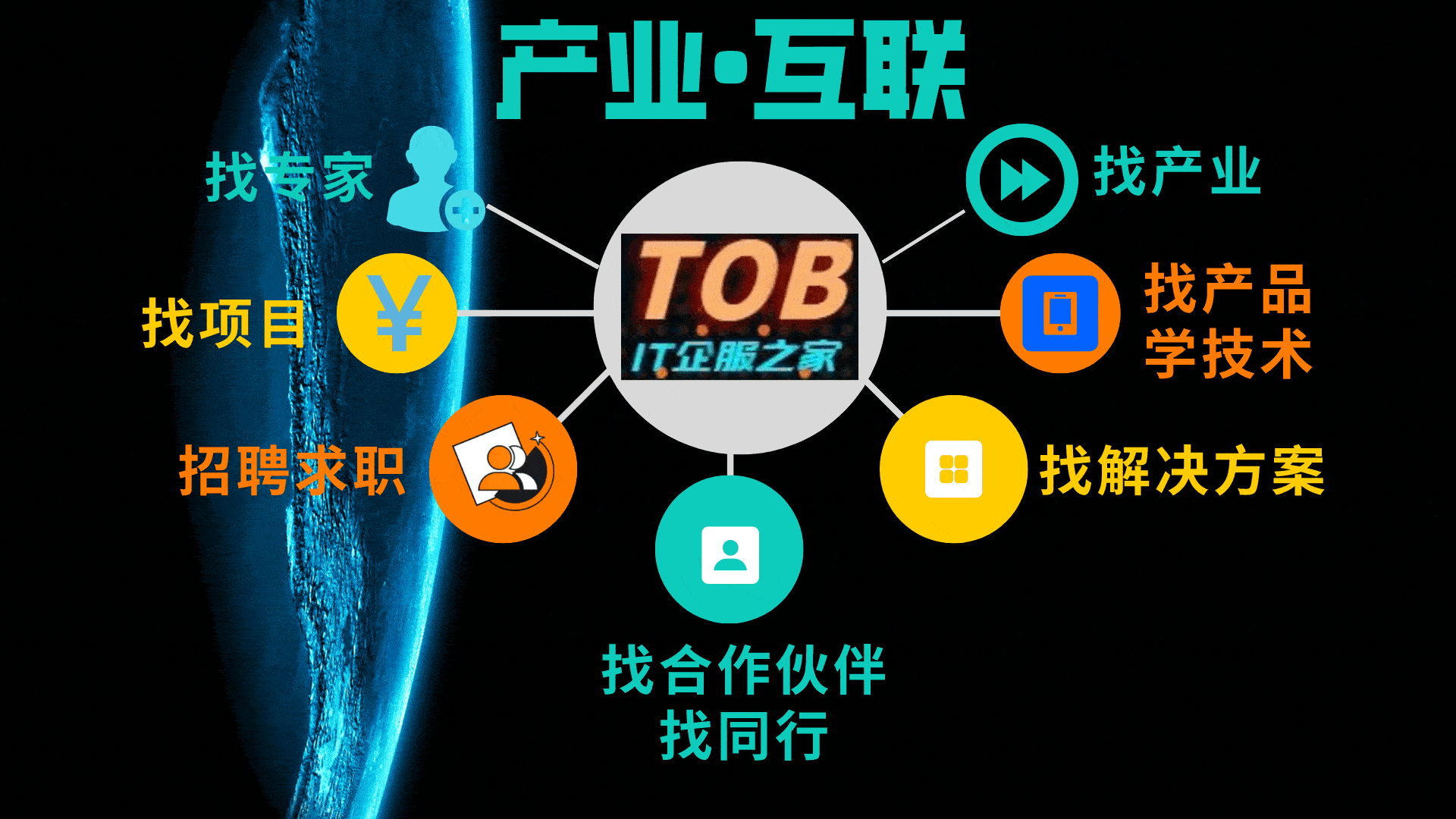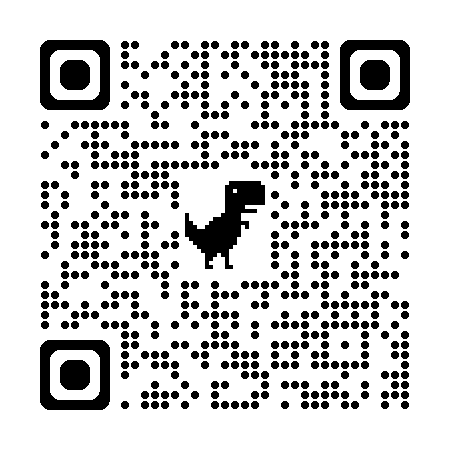马上注册,结交更多好友,享用更多功能,让你轻松玩转社区。
您需要 登录 才可以下载或查看,没有账号?立即注册
×
- # 版权声明: 本代码版权所有 (c) OpenMMLab。
- import os
- from collections import OrderedDict
- from os import path as osp
- from typing import List, Tuple, Union
- import mmcv
- import numpy as np
- from nuscenes.nuscenes import NuScenes
- from nuscenes.utils.geometry_utils import view_points
- from pyquaternion import Quaternion
- from shapely.geometry import MultiPoint, box
- from mmdet3d.core.bbox import points_cam2img
- from mmdet3d.datasets import NuScenesDataset
- # 定义nuScenes数据集的类别和属性
- nus_categories = ('car', 'truck', 'trailer', 'bus', 'construction_vehicle',
- 'bicycle', 'motorcycle', 'pedestrian', 'traffic_cone',
- 'barrier')
- nus_attributes = ('cycle.with_rider', 'cycle.without_rider',
- 'pedestrian.moving', 'pedestrian.standing',
- 'pedestrian.sitting_lying_down', 'vehicle.moving',
- 'vehicle.parked', 'vehicle.stopped', 'None')
- def create_nuscenes_infos(root_path,
- info_prefix,
- version='v1.0-trainval',
- max_sweeps=10):
- """
- 创建nuScenes数据集的信息文件。
- 给定原始数据,生成相关的信息文件,并以pkl格式保存。
- 参数:
- root_path (str): 数据根目录路径。
- info_prefix (str): 要生成的信息文件的前缀。
- version (str, 可选): 数据版本,默认为'v1.0-trainval'。
- max_sweeps (int, 可选): 最大sweeps数量,默认为10。
- """
- from nuscenes.nuscenes import NuScenes
- nusc = NuScenes(version=version, dataroot=root_path, verbose=True)
- from nuscenes.utils import splits
- available_vers = ['v1.0-trainval', 'v1.0-test', 'v1.0-mini']
- assert version in available_vers
- if version == 'v1.0-trainval':
- train_scenes = splits.train
- val_scenes = splits.val
- elif version == 'v1.0-test':
- train_scenes = splits.test
- val_scenes = []
- elif version == 'v1.0-mini':
- train_scenes = splits.mini_train
- val_scenes = splits.mini_val
- else:
- raise ValueError('未知版本')
- # 过滤现有场景
- available_scenes = get_available_scenes(nusc)
- available_scene_names = [s['name'] for s in available_scenes]
- train_scenes = list(
- filter(lambda x: x in available_scene_names, train_scenes))
- val_scenes = list(filter(lambda x: x in available_scene_names, val_scenes))
- train_scenes = set([
- available_scenes[available_scene_names.index(s)]['token']
- for s in train_scenes
- ])
- val_scenes = set([
- available_scenes[available_scene_names.index(s)]['token']
- for s in val_scenes
- ])
- test = 'test' in version
- if test:
- print('测试场景数量: {}'.format(len(train_scenes)))
- else:
- print('训练场景数量: {},验证场景数量: {}'.format(
- len(train_scenes), len(val_scenes)))
- train_nusc_infos, val_nusc_infos = _fill_trainval_infos(
- nusc, train_scenes, val_scenes, test, max_sweeps=max_sweeps)
- metadata = dict(version=version)
- if test:
- print('测试样本数量: {}'.format(len(train_nusc_infos)))
- data = dict(infos=train_nusc_infos, metadata=metadata)
- info_path = osp.join(root_path,
- '{}_infos_test.pkl'.format(info_prefix))
- mmcv.dump(data, info_path)
- else:
- print('训练样本数量: {},验证样本数量: {}'.format(
- len(train_nusc_infos), len(val_nusc_infos)))
- data = dict(infos=train_nusc_infos, metadata=metadata)
- info_path = osp.join(root_path,
- '{}_infos_train.pkl'.format(info_prefix))
- mmcv.dump(data, info_path)
- data['infos'] = val_nusc_infos
- info_val_path = osp.join(root_path,
- '{}_infos_val.pkl'.format(info_prefix))
- mmcv.dump(data, info_val_path)
- def get_available_scenes(nusc):
- """
- 从输入的nuScenes类中获取可用场景。
- 给定原始数据,获取可用场景的信息以便生成进一步的信息。
- 参数:
- nusc (class): nuScenes数据集的类。
- 返回:
- available_scenes (list[dict]): 可用场景的基本信息列表。
- """
- available_scenes = []
- print('总场景数量: {}'.format(len(nusc.scene)))
- for scene in nusc.scene:
- scene_token = scene['token']
- scene_rec = nusc.get('scene', scene_token)
- sample_rec = nusc.get('sample', scene_rec['first_sample_token'])
- sd_rec = nusc.get('sample_data', sample_rec['data']['LIDAR_TOP'])
- has_more_frames = True
- scene_not_exist = False
- while has_more_frames:
- lidar_path, boxes, _ = nusc.get_sample_data(sd_rec['token'])
- lidar_path = str(lidar_path)
- if os.getcwd() in lidar_path:
- # 从lyftdataset获取的路径是绝对路径
- lidar_path = lidar_path.split(f'{os.getcwd()}/')[-1]
- # 相对路径
- if not mmcv.is_filepath(lidar_path):
- scene_not_exist = True
- break
- else:
- break
- if scene_not_exist:
- continue
- available_scenes.append(scene)
- print('存在的场景数量: {}'.format(len(available_scenes)))
- return available_scenes
- def _fill_trainval_infos(nusc,
- train_scenes,
- val_scenes,
- test=False,
- max_sweeps=10):
- """
- 从原始数据生成训练/验证信息。
- 参数:
- nusc (:obj:`NuScenes`): nuScenes数据集类。
- train_scenes (list[str]): 训练场景的基本信息。
- val_scenes (list[str]): 验证场景的基本信息。
- test (bool, 可选): 是否使用测试模式。在测试模式中,不能访问注释。默认为False。
- max_sweeps (int, 可选): 最大sweeps数量。默认为10。
- 返回:
- tuple[list[dict]]: 将保存到信息文件的训练集和验证集信息。
- """
- train_nusc_infos = []
- val_nusc_infos = []
- for sample in mmcv.track_iter_progress(nusc.sample):
- lidar_token = sample['data']['LIDAR_TOP']
- sd_rec = nusc.get('sample_data', sample['data']['LIDAR_TOP'])
- cs_record = nusc.get('calibrated_sensor',
- sd_rec['calibrated_sensor_token'])
- pose_record = nusc.get('ego_pose', sd_rec['ego_pose_token'])
- lidar_path, boxes, _ = nusc.get_sample_data(lidar_token)
- mmcv.check_file_exist(lidar_path)
- info = {
- 'lidar_path': lidar_path,
- 'token': sample['token'],
- 'sweeps': [],
- 'cams': dict(),
- 'lidar2ego_translation': cs_record['translation'],
- 'lidar2ego_rotation': cs_record['rotation'],
- 'ego2global_translation': pose_record['translation'],
- 'ego2global_rotation': pose_record['rotation'],
- 'timestamp': sample['timestamp'],
- }
- l2e_r = info['lidar2ego_rotation']
- l2e_t = info['lidar2ego_translation']
- e2g_r = info['ego2global_rotation']
- e2g_t = info['ego2global_translation']
- l2e_r_mat = Quaternion(l2e_r).rotation_matrix
- e2g_r_mat = Quaternion(e2g_r).rotation_matrix
- # 获取每帧的6个图像的信息
- camera_types = [
- 'CAM_FRONT',
- 'CAM_FRONT_RIGHT',
- 'CAM_FRONT_LEFT',
- 'CAM_BACK',
- 'CAM_BACK_LEFT',
- 'CAM_BACK_RIGHT',
- ]
- for cam in camera_types:
- cam_token = sample['data'][cam]
- cam_path, _, cam_intrinsic = nusc.get_sample_data(cam_token)
- cam_info = obtain_sensor2top(nusc, cam_token, l2e_t, l2e_r_mat,
- e2g_t, e2g_r_mat, cam)
- cam_info.update(cam_intrinsic=cam_intrinsic)
- info['cams'].update({cam: cam_info})
- # 获取单个关键帧的sweeps
- sd_rec = nusc.get('sample_data', sample['data']['LIDAR_TOP'])
- sweeps = []
- while len(sweeps) < max_sweeps:
- if not sd_rec['prev'] == '':
- sweep = obtain_sensor2top(nusc, sd_rec['prev'], l2e_t,
- l2e_r_mat, e2g_t, e2g_r_mat, 'lidar')
- sweeps.append(sweep)
- sd_rec = nusc.get('sample_data
- ', sd_rec['prev'])
- else:
- break
- info['sweeps'] = sweeps
- # 获取注释
- if not test:
- annotations = [
- nusc.get('sample_annotation', token)
- for token in sample['anns']
- ]
- locs = np.array([b.center for b in boxes]).reshape(-1, 3)
- dims = np.array([b.wlh for b in boxes]).reshape(-1, 3)
- rots = np.array([b.orientation.yaw_pitch_roll[0]
- for b in boxes]).reshape(-1, 1)
- velocity = np.array(
- [nusc.box_velocity(token)[:2] for token in sample['anns']])
- valid_flag = np.array(
- [(anno['num_lidar_pts'] + anno['num_radar_pts']) > 0
- for anno in annotations],
- dtype=bool).reshape(-1)
- # 将速度从全局转换为激光雷达
- for i in range(len(boxes)):
- velo = np.array([*velocity[i], 0.0])
- velo = velo @ np.linalg.inv(e2g_r_mat).T @ np.linalg.inv(
- l2e_r_mat).T
- velocity[i] = velo[:2]
- names = [b.name for b in boxes]
- for i in range(len(names)):
- if names[i] in NuScenesDataset.NameMapping:
- names[i] = NuScenesDataset.NameMapping[names[i]]
- names = np.array(names)
- # 我们需要将box尺寸转换为
- # 我们激光雷达坐标系的格式
- # 即x_size, y_size, z_size(对应于l, w, h)
- gt_boxes = np.concatenate([locs, dims[:, [1, 0, 2]], rots], axis=1)
- assert len(gt_boxes) == len(
- annotations), f'{len(gt_boxes)}, {len(annotations)}'
- info['gt_boxes'] = gt_boxes
- info['gt_names'] = names
- info['gt_velocity'] = velocity.reshape(-1, 2)
- info['num_lidar_pts'] = np.array(
- [a['num_lidar_pts'] for a in annotations])
- info['num_radar_pts'] = np.array(
- [a['num_radar_pts'] for a in annotations])
- info['valid_flag'] = valid_flag
- if sample['scene_token'] in train_scenes:
- train_nusc_infos.append(info)
- else:
- val_nusc_infos.append(info)
- return train_nusc_infos, val_nusc_infos
- def obtain_sensor2top(nusc,
- sensor_token,
- l2e_t,
- l2e_r_mat,
- e2g_t,
- e2g_r_mat,
- sensor_type='lidar'):
- """
- 获取从一般传感器到顶部激光雷达的RT矩阵信息。
- 参数:
- nusc (class): nuScenes数据集类。
- sensor_token (str): 与特定传感器类型对应的样本数据token。
- l2e_t (np.ndarray): 从激光雷达到ego的平移向量,形状为(1, 3)。
- l2e_r_mat (np.ndarray): 从激光雷达到ego的旋转矩阵,形状为(3, 3)。
- e2g_t (np.ndarray): 从ego到全局的平移向量,形状为(1, 3)。
- e2g_r_mat (np.ndarray): 从ego到全局的旋转矩阵,形状为(3, 3)。
- sensor_type (str, 可选): 要校准的传感器类型。默认为'lidar'。
- 返回:
- sweep (dict): 经过转换后的sweep信息。
- """
- sd_rec = nusc.get('sample_data', sensor_token)
- cs_record = nusc.get('calibrated_sensor',
- sd_rec['calibrated_sensor_token'])
- pose_record = nusc.get('ego_pose', sd_rec['ego_pose_token'])
- data_path = str(nusc.get_sample_data_path(sd_rec['token']))
- if os.getcwd() in data_path: # 从lyftdataset获取的路径是绝对路径
- data_path = data_path.split(f'{os.getcwd()}/')[-1] # 相对路径
- sweep = {
- 'data_path': data_path,
- 'type': sensor_type,
- 'sample_data_token': sd_rec['token'],
- 'sensor2ego_translation': cs_record['translation'],
- 'sensor2ego_rotation': cs_record['rotation'],
- 'ego2global_translation': pose_record['translation'],
- 'ego2global_rotation': pose_record['rotation'],
- 'timestamp': sd_rec['timestamp']
- }
- l2e_r_s = sweep['sensor2ego_rotation']
- l2e_t_s = sweep['sensor2ego_translation']
- e2g_r_s = sweep['ego2global_rotation']
- e2g_t_s = sweep['ego2global_translation']
- # 获取从传感器到顶部激光雷达的RT
- # sweep->ego->global->ego'->lidar
- l2e_r_s_mat = Quaternion(l2e_r_s).rotation_matrix
- e2g_r_s_mat = Quaternion(e2g_r_s).rotation_matrix
- R = (l2e_r_s_mat.T @ e2g_r_s_mat.T) @ (
- np.linalg.inv(e2g_r_mat).T @ np.linalg.inv(l2e_r_mat).T)
- T = (l2e_t_s @ e2g_r_s_mat.T + e2g_t_s) @ (
- np.linalg.inv(e2g_r_mat).T @ np.linalg.inv(l2e_r_mat).T)
- T -= e2g_t @ (np.linalg.inv(e2g_r_mat).T @ np.linalg.inv(l2e_r_mat).T
- ) + l2e_t @ np.linalg.inv(l2e_r_mat).T
- sweep['sensor2lidar_rotation'] = R.T # points @ R.T + T
- sweep['sensor2lidar_translation'] = T
- return sweep
- def export_2d_annotation(root_path, info_path, version, mono3d=True):
- """
- 从信息文件和原始数据导出2D注释。
- 参数:
- root_path (str): 原始数据的根路径。
- info_path (str): 信息文件的路径。
- version (str): 数据集版本。
- mono3d (bool, 可选): 是否导出mono3d注释。默认为True。
- """
- # 获取相机的bbox注释
- camera_types = [
- 'CAM_FRONT',
- 'CAM_FRONT_RIGHT',
- 'CAM_FRONT_LEFT',
- 'CAM_BACK',
- 'CAM_BACK_LEFT',
- 'CAM_BACK_RIGHT',
- ]
- nusc_infos = mmcv.load(info_path)['infos']
- nusc = NuScenes(version=version, dataroot=root_path, verbose=True)
- # info_2d_list = []
- cat2Ids = [
- dict(id=nus_categories.index(cat_name), name=cat_name)
- for cat_name in nus_categories
- ]
- coco_ann_id = 0
- coco_2d_dict = dict(annotations=[], images=[], categories=cat2Ids)
- for info in mmcv.track_iter_progress(nusc_infos):
- for cam in camera_types:
- cam_info = info['cams'][cam]
- coco_infos = get_2d_boxes(
- nusc,
- cam_info['sample_data_token'],
- visibilities=['', '1', '2', '3', '4'],
- mono3d=mono3d)
- (height, width, _) = mmcv.imread(cam_info['data_path']).shape
- coco_2d_dict['images'].append(
- dict(
- file_name=cam_info['data_path'].split('data/nuscenes/')
- [-1],
- id=cam_info['sample_data_token'],
- token=info['token'],
- cam2ego_rotation=cam_info['sensor2ego_rotation'],
- cam2ego_translation=cam_info['sensor2ego_translation'],
- ego2global_rotation=info['ego2global_rotation'],
- ego2global_translation=info['ego2global_translation'],
- cam_intrinsic=cam_info['cam_intrinsic'],
- width=width,
- height=height))
- for coco_info in coco_infos:
- if coco_info is None:
- continue
- # 添加一个空键用于coco格式
- coco_info['segmentation'] = []
- coco_info['id'] = coco_ann_id
- coco_2d_dict['annotations'].append(coco_info)
- coco_ann_id += 1
- if mono3d:
- json_prefix = f'{info_path[:-4]}_mono3d'
- else:
- json_prefix = f'{info_path[:-4]}'
- mmcv.dump(coco_2d_dict, f'{json_prefix}.coco.json')
- def get_2d_boxes(nusc,
- sample_data_token: str,
- visibilities: List[str],
- mono3d=True):
- """
- 获取给定sample_data_token的2D注释记录。
- 参数:
- sample_data_token (str): 属于相机关键帧的样本数据token。
- visibilities (list[str]): 可见性过滤器。
- mono3d (bool): 是否获取带有mono3d注释的box。
- 返回:
- list[dict]: 属于输入
- sample_data_token的2D注释记录列表。
- """
- # 获取样本数据和与该样本数据对应的样本。
- sd_rec = nusc.get('sample_data', sample_data_token)
- assert sd_rec[
- 'sensor_modality'] == 'camera', '错误: get_2d_boxes仅适用于相机样本数据!'
- if not sd_rec['is_key_frame']:
- raise ValueError(
- '2D重新投影仅适用于关键帧。')
- s_rec = nusc.get('sample', sd_rec['sample_token'])
- # 获取校准传感器和自我姿态记录,以获取转换矩阵。
- cs_rec = nusc.get('calibrated_sensor', sd_rec['calibrated_sensor_token'])
- pose_rec = nusc.get('ego_pose', sd_rec['ego_pose_token'])
- camera_intrinsic = np.array(cs_rec['camera_intrinsic'])
- # 获取所有具有指定可见性的注释。
- ann_recs = [
- nusc.get('sample_annotation', token) for token in s_rec['anns']
- ]
- ann_recs = [
- ann_rec for ann_rec in ann_recs
- if (ann_rec['visibility_token'] in visibilities)
- ]
- repro_recs = []
- for ann_rec in ann_recs:
- # 增加sample_annotation的token信息。
- ann_rec['sample_annotation_token'] = ann_rec['token']
- ann_rec['sample_data_token'] = sample_data_token
- # 获取全局坐标中的box。
- box = nusc.get_box(ann_rec['token'])
- # 将它们移动到自我姿态框架。
- box.translate(-np.array(pose_rec['translation']))
- box.rotate(Quaternion(pose_rec['rotation']).inverse)
- # 将它们移动到校准传感器框架。
- box.translate(-np.array(cs_rec['translation']))
- box.rotate(Quaternion(cs_rec['rotation']).inverse)
- # 过滤掉不在校准传感器前面的角。
- corners_3d = box.corners()
- in_front = np.argwhere(corners_3d[2, :] > 0).flatten()
- corners_3d = corners_3d[:, in_front]
- # 将3D box投影到2D。
- corner_coords = view_points(corners_3d, camera_intrinsic,
- True).T[:, :2].tolist()
- # 仅保留落在图像内的角。
- final_coords = post_process_coords(corner_coords)
- # 如果重新投影的角的凸包不与图像画布相交,则跳过。
- if final_coords is None:
- continue
- else:
- min_x, min_y, max_x, max_y = final_coords
- # 生成要包含在.json文件中的字典记录。
- repro_rec = generate_record(ann_rec, min_x, min_y, max_x, max_y,
- sample_data_token, sd_rec['filename'])
- # 如果mono3d=True,则在相机坐标中添加3D注释
- if mono3d and (repro_rec is not None):
- loc = box.center.tolist()
- dim = box.wlh
- dim[[0, 1, 2]] = dim[[1, 2, 0]] # 将wlh转换为我们的lhw
- dim = dim.tolist()
- rot = box.orientation.yaw_pitch_roll[0]
- rot = [-rot] # 将旋转转换为我们的相机坐标
- global_velo2d = nusc.box_velocity(box.token)[:2]
- global_velo3d = np.array([*global_velo2d, 0.0])
- e2g_r_mat = Quaternion(pose_rec['rotation']).rotation_matrix
- c2e_r_mat = Quaternion(cs_rec['rotation']).rotation_matrix
- cam_velo3d = global_velo3d @ np.linalg.inv(
- e2g_r_mat).T @ np.linalg.inv(c2e_r_mat).T
- velo = cam_velo3d[0::2].tolist()
- repro_rec['bbox_cam3d'] = loc + dim + rot
- repro_rec['velo_cam3d'] = velo
- center3d = np.array(loc).reshape([1, 3])
- center2d = points_cam2img(
- center3d, camera_intrinsic, with_depth=True)
- repro_rec['center2d'] = center2d.squeeze().tolist()
- # 标准化center2D + 深度
- # 如果深度小于0的样本将被移除
- if repro_rec['center2d'][2] <= 0:
- continue
- ann_token = nusc.get('sample_annotation',
- box.token)['attribute_tokens']
- if len(ann_token) == 0:
- attr_name = 'None'
- else:
- attr_name = nusc.get('attribute', ann_token[0])['name']
- attr_id = nus_attributes.index(attr_name)
- repro_rec['attribute_name'] = attr_name
- repro_rec['attribute_id'] = attr_id
- repro_recs.append(repro_rec)
- return repro_recs
- def post_process_coords(
- corner_coords: List, imsize: Tuple[int, int] = (1600, 900)
- ) -> Union[Tuple[float, float, float, float], None]:
- """
- 获取重新投影的bbox角的凸包和图像画布的交集,如果没有交集则返回None。
- 参数:
- corner_coords (list[int]): 重新投影的bbox角的坐标。
- imsize (tuple[int]): 图像画布的尺寸。
- 返回:
- tuple[float]: 2D box角的凸包和图像画布的交集。
- """
- polygon_from_2d_box = MultiPoint(corner_coords).convex_hull
- img_canvas = box(0, 0, imsize[0], imsize[1])
- if polygon_from_2d_box.intersects(img_canvas):
- img_intersection = polygon_from_2d_box.intersection(img_canvas)
- intersection_coords = np.array(
- [coord for coord in img_intersection.exterior.coords])
- min_x = min(intersection_coords[:, 0])
- min_y = min(intersection_coords[:, 1])
- max_x = max(intersection_coords[:, 0])
- max_y = max(intersection_coords[:, 1])
- return min_x, min_y, max_x, max_y
- else:
- return None
- def generate_record(ann_rec: dict, x1: float, y1: float, x2: float, y2: float,
- sample_data_token: str, filename: str) -> OrderedDict:
- """
- 给定各种信息和2D边界框坐标,生成一个2D注释记录。
- 参数:
- ann_rec (dict): 原始3d注释记录。
- x1 (float): x坐标的最小值。
- y1 (float): y坐标的最小值。
- x2 (float): x坐标的最大值。
- y2 (float): y坐标的最大值。
- sample_data_token (str): 样本数据token。
- filename (str): 注释所在的对应图像文件。
- 返回:
- dict: 一个2D注释记录。
- - file_name (str): 文件名
- - image_id (str): 样本数据token
- - area (float): 2d box的面积
- - category_name (str): 类别名称
- - category_id (int): 类别id
- - bbox (list[float]): 2d box的左x, 顶y, dx, dy
- - iscrowd (int): 区域是否是拥挤的
- """
- repro_rec = OrderedDict()
- repro_rec['sample_data_token'] = sample_data_token
- coco_rec = dict()
- relevant_keys = [
- 'attribute_tokens',
- 'category_name',
- 'instance_token',
- 'next',
- 'num_lidar_pts',
- 'num_radar_pts',
- 'prev',
- 'sample_annotation_token',
- 'sample_data_token',
- 'visibility_token',
- ]
- for key, value in ann_rec.items():
- if key in relevant_keys:
- repro_rec[key] = value
- repro_rec['bbox_corners'] = [x1, y1, x2, y2]
- repro_rec['filename'] = filename
- coco_rec['file_name'] = filename
- coco_rec['image_id'] = sample_data_token
- coco_rec['area'] = (y2 - y1) * (x2 - x1)
- if repro_rec['category_name'] not in NuScenesDataset.NameMapping:
- return None
- cat_name = NuScenesDataset.NameMapping[repro_rec['category_name']]
- coco_rec['category_name'] = cat_name
- coco_rec['category_id'] = nus_categories.index(cat_name)
- coco_rec['bbox'] = [x1, y1, x2 - x1, y2 - y1]
- coco_rec['iscrowd'] = 0
- return coco_rec
|





